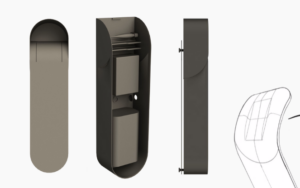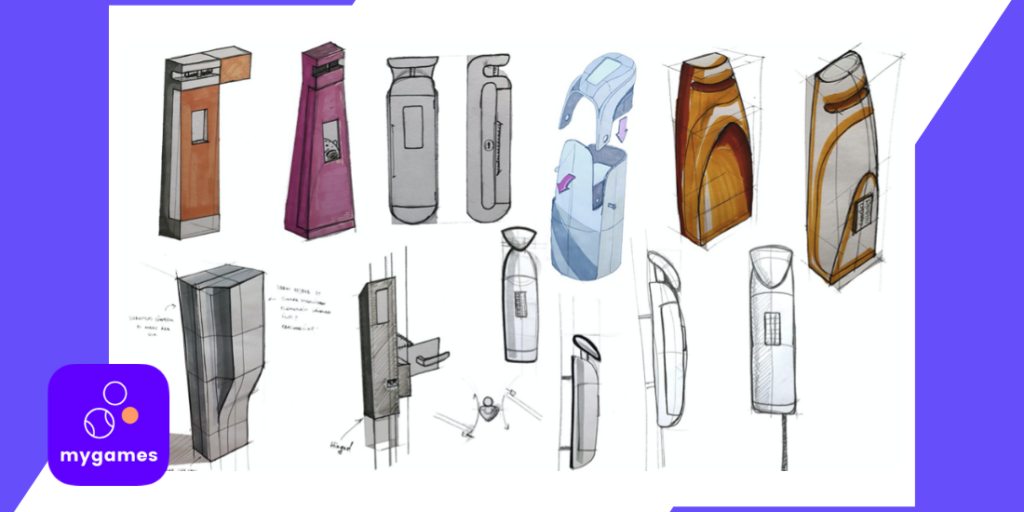At the beginning of the year, a collaboration project between MyGames and EKA Industrial Design students was launched, which sought the best possible form and solution for the MyGames field automation device. Cooperation with EKA went very well and today the project has reached a final result that exceeds expectations. The functionality of the device has been thoroughly developed, taking into account the needs of the customer, the installer and the user. Great emphasis has also been placed on the device’s durability in different weather conditions, its protection against both vandals and insects, etc. The image below betrays the appearance of the future automation device. The final is now followed by a summary of one project and a new launch soon. With the result of the newly completed project, it is planned to reach series production in the near future with the support of Enterprise Estonia’s Development Department and with the help of EKA and Tallinn University of Technology in order to start accepting orders from field owners around the world.

MyGames field automation
Taavi Tamm, the marketing manager of MyGames, kept the pulse of the innovation share project, summarizing the project as follows: “Cooperation with EKA and its result was unexpected in the best sense. The students were thoroughly prepared for each meeting, they were always able to surprise with a new solution, and they never got stuck in one or the first solution. The best proof of this is the image in the header of the post 🙂 Throughout the creative process, the perspectives of as many different users as possible on the future product were taken into account – students mapped customer routes through the eyes of the customer, installer, user and caregiver. We repeatedly ran into difficult questions, but the students had a solution to every challenge. Thank you, Karl and Erik Heiki! Until next time!”
We also asked for comments from students and their tutor:
Authors of the work: Erik Heiki Veelmaa and Karl Kukk (EKA)
“In our opinion, any cooperation with extracurricular partners is always enriching teaching and provides an opportunity to apply and test the knowledge acquired at school. We also carried this project with clients who were open-minded and whose passion for the project was contagious. In our opinion, the cooperation with them went very well and we can be completely satisfied with the result.
The current solution is certainly a big step forward from their original design, but we find that there is always room for improvement and we hope to be able to get involved in the development of future, already improved versions. ”
Erik Heiki Veelmaa & Karl Kukk
Supervisor: Mihkel Mäll (EKA)
“EKA Industrial Design students designed a tennis court automation device for MyGames, which also had a lighting and irrigation system control function in addition to locking. MyGames stipulated that the device must be usable all year round, easy to maintain and easy to install. The components that were to fit in the housing were also provided.
As a supervisor, I can say that this project was very important in terms of schoolwork, thanks to which industrial design students were able to apply the knowledge learned in their lessons to a real customer by creating a product. The students analyzed all possible users, possibilities of use, functions of the device and looked for suitable ways and materials for the production of the housing. An important aspect was the placement of the components so that the original solution would give a much more compact result.
I am satisfied with the result created by the students – In addition to compactness, convenient use and simple layout, the students found a great shape for the device, which is minimalist in shape and depicts a tennis racket and ball in the abstract point of view.
Although the original concept was created with tennis courts in mind, I think that this product has a great future outlook outside of tennis as well – it can certainly be used to conveniently rent and manage stadiums, gyms and halls. ”
* The project was supported by Enterprise Estonia from the European Regional Development Fund.



